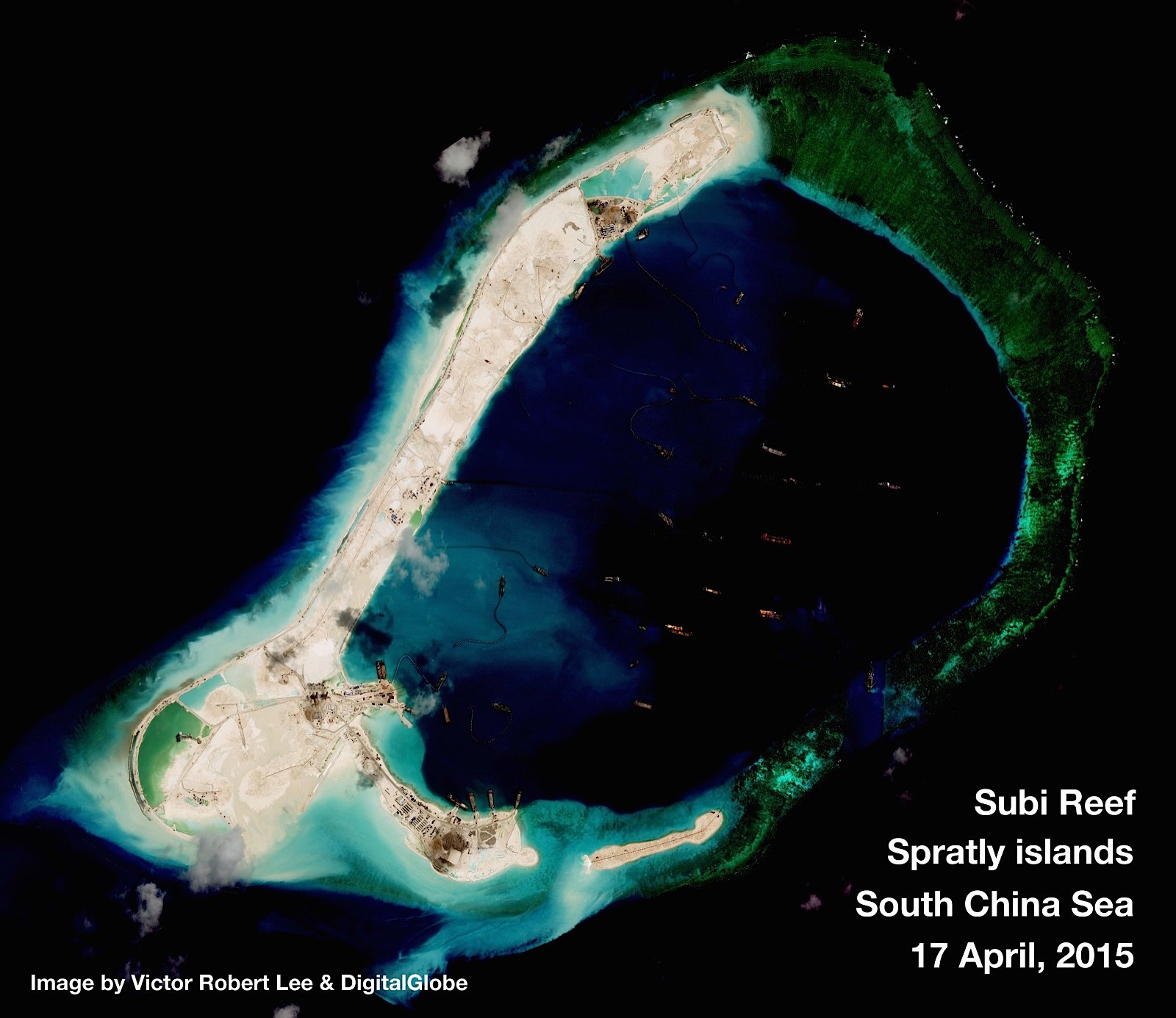
After two months, Secretary of Defense Ash Carter provided a clear explanation of an U.S. Oct. 27 South China Sea freedom of navigation operation (FON op) that both enraged China and left domestic maritime observers with lingering questions on American intentions.
In a Dec. 22 letter to Senate Armed Services Committee chair Sen. John McCain, Carter outlined the mission of USS Lassen (DDG-82) that tested territorial claims of not only China but Taiwan, the Philippines and Vietnam.
Lassen transited “inside 12 nautical miles of five maritime features in the Spratly Islands — Subi Reef, Northeast Cay, Southwest Cay, South Reef, and Sandy Cay — which are claimed by China, Taiwan, Vietnam, and the Philippines,” wrote Carter.
“The FONOP involved a continuous and expeditious transit that is consistent with both the
right of innocent passage, which only applies in a territorial sea, and with the high seas freedom
of navigation that applies beyond any territorial sea.”

Innocent passage is a type of transit in which — under maritime law — a warship can enter a territorial sea of another country without warning but must refrain from any military action like activating radars, firing weapons, transmitting propaganda or conduct drills.
In particular, Carter explained why Lassen moved past Subi Reef — a Chinese-built artificial island in the Spratly Islands — in the manner of an innocent passage.
“We believe that Subi Reef, before China turned it into an artificial island, was a low-tide elevation and that it therefore cannot generate its own entitlement to a territorial sea. However, if it is located within 12 nautical miles of another geographic feature that is entitled to a territorial sea – as might be the case with Sandy Cay – then the low-water line on Subi Reef could be used as the baseline for measuring Sandy Cay’s territorial sea,” wrote Carter.
“In those circumstances, Subi Reef could be surrounded by a 12-nautical mile-territorial sea despite being submerged at high tide in its natural state. Given the factual uncertainty, we conducted the FONOP in a manner that is lawful under all possible scenarios to preserve U.S. options should the factual ambiguities be resolved, disputes settled, and clarity on maritime claims reached.”

Carter’s description confirms the account constructed in the trade and popular press in the weeks following the operation but not officially confirmed by the Pentagon on orders from the White House leading to “confusion that was completely unnecessary,” Gregory Poling with the Center for Strategic and International Studies Asian Maritime Transparency Initiative told USNI News on Tuesday.
“They should have released the statement a week after the operation not after two months of hand wringing.”
Another expert was critical of the innocent passage by Subi Reef and the ambiguity it might create.
“Observing innocent passage in the vicinity of Subi Reef was a bad idea,” James Kraska, professor in the Stockton Center for the Study of International Law at the Naval War College, told USNI News on Tuesday.
“The United States is making China’s — or some future claimant’s — far-fetched argument for them rather than protecting and promoting its own interests and asserting its long-standing liberal theory of navigational rights.”





